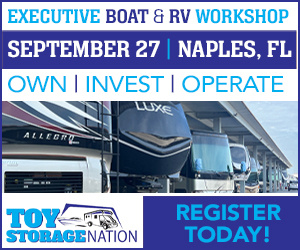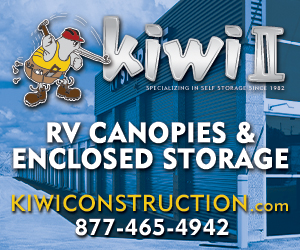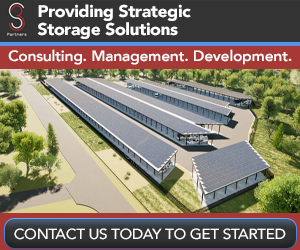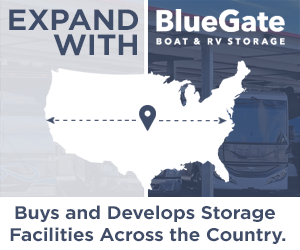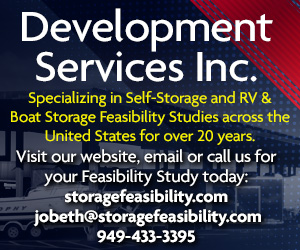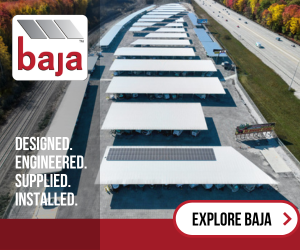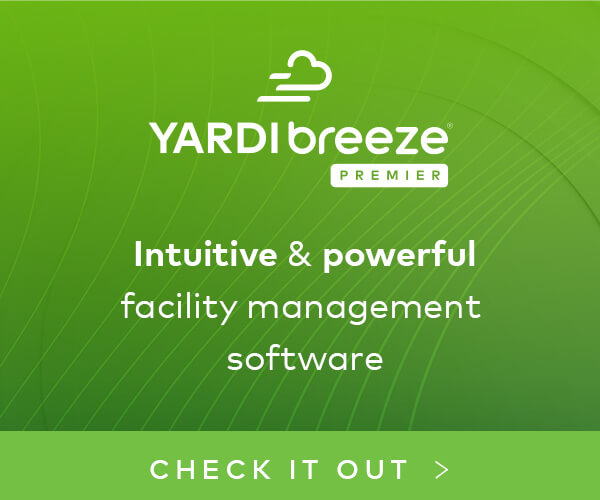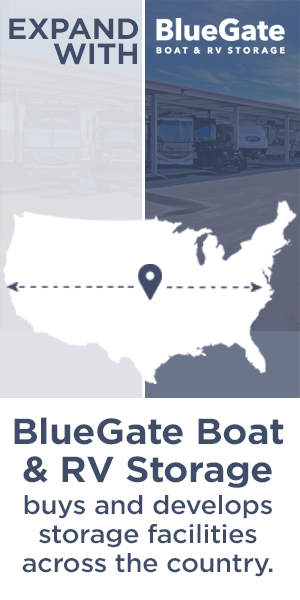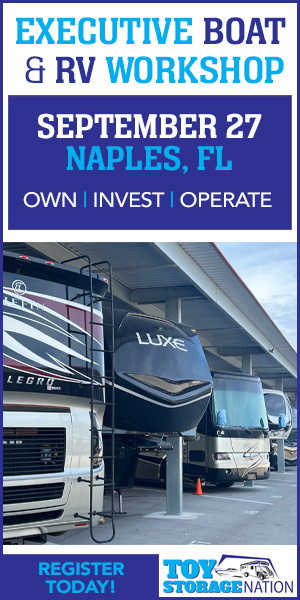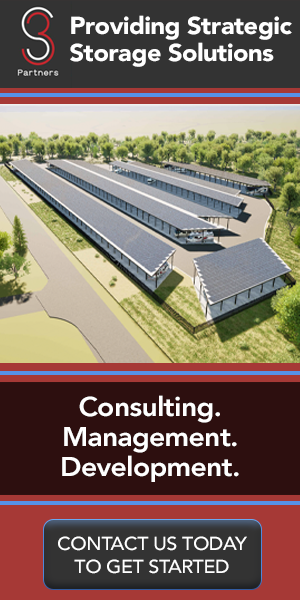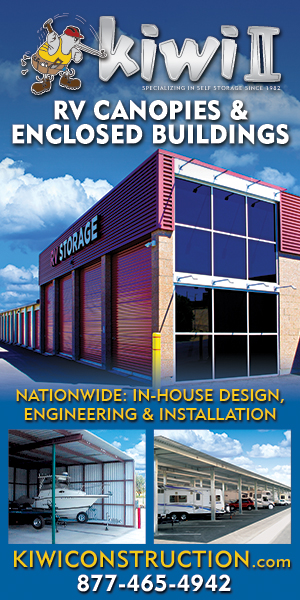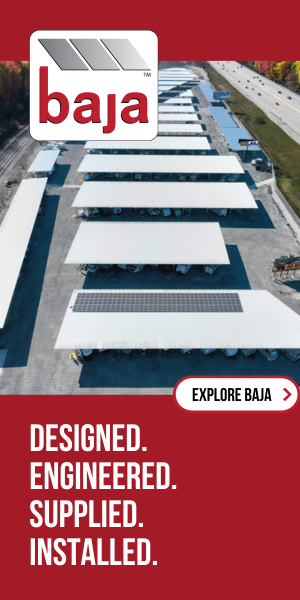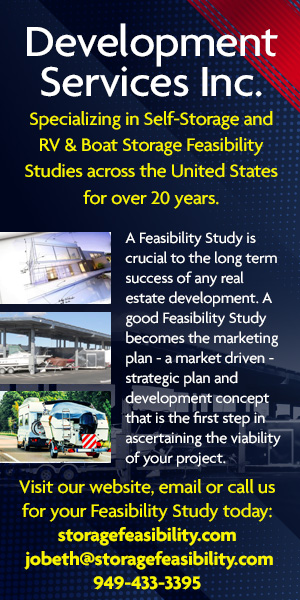Bob Hayworth is CEO and founder of Baja Carports, which designs, engineers, fabricates and installs carports nationwide for a variety of purposes, including RV and boat storage. Baja was one of the first to utilize solar panels on carports, igniting huge interest among business operators seeking to preserve the environment while reducing energy costs–one of the priciest line items in any budget. With more than 40 years of experience in all facets of design and construction of carports, along with invaluable expertise in solar enhancements, Bob is a popular presenter at conventions coast to coast, frequently found at Toy Storage Nation Executive RV and Boat Storage Workshops (catch him in Fort Myers, Dec. 1).
After years of promoting RV and boat storage, Bob crossed over and became a developer-owner himself, allowing him unique perspectives of both sides of the industry, which he shares in the following interview.
Will you give us a little background on how you landed in the carport business?
I started building carports for my dad when I was just 17. I pretty much built carports for drive-ins, car dealerships and apartment complexes every summer until I graduated from college. At 22, I started my first carport company. In 1981, I started Baja Construction to build carports for multifamily projects and then eventually graduated into mini-storage buildings and RV canopies.
When and why did Baja pivot to RV and boat storage? How about solar canopies?
Well, it was about 1990, and I was working for a company that was building RV and boat storage. I had sold for them, and we had also installed for them, but they suddenly went out of business. A customer called me and said that the company had delivered the material for his project, but they’d gone bankrupt. He told me that if I could take the plans and install the project within six weeks, he’d give me the job for the same price. I said okay. And we did it. Basically, we pretty much do whatever people want us to do.
It was the same kind of thing for solar. I got a call from a solar company that was going to do a project outside of San Diego. It was around 2007 or 2008. The project was for RV storage canopies, and they wanted to put solar on top. He asked me if we’d build the carports. We’d never done a solar project before, but I asked them to tell us the weight of the solar and we’d get it done. And we did. That actually was our first solar RV project.
This is how I first learned about solar. I’m always interested in the numbers, and I knew the project was getting a 30% tax credit, so I asked the client how much the project cost and how this shakes out. It cost $750,000, and he said that with the 30% solar tax credit, and the accelerated depreciation, the whole project was costing him a net of $75,000. There were 100 spaces and he was getting $100 for each. I put the numbers together and asked, “So you’re making $10,000 a month off a $75,000 investment?” He said “yes,” and I said, “I’m going to start doing speeches on this!”
Can you share the benefits of going solar?
There’s a whole bunch of reasons. Number one, it’s a lot easier to get it approved, get it accepted by the building department because they have a lot of trouble saying no to anything that’s solar. The other reason is the federal tax credit for installing solar. On one of the projects we’re working on, we’re going to get probably a 60% tax credit. It’s a huge amount. And that’s for a 20 million project, so the tax credit will probably be worth $8 million.
Can you explain why the tax rate fluctuates?
Sure. It depends on what you can qualify for. When you build solar, the tax credit starts at 30%. If your project is all-American made, then you can get another 10%. If you’re building in an energy zone, a place that needs more power, it’s worth another $10%. So now you’re up to 50% tax credit. Then, if you build in a low-income area, and you’re offsetting fuel like coal, you can get that credit up to $60%, which is the max.
How does a developer decide between enclosed units, carports or open spaces?
Like I tell everybody, if you go with open spaces, you can get the wrong clientele, so if you want your life to be easy, don’t build open lots. Generally, people who can only afford open spaces don’t have the best rig and they’re most likely to give you problems in the future. Personally, I wouldn’t go with open lots on any of my [personal] projects.
For fully enclosed, you get a lot less return on investment and your liability goes way up. If you’re fully enclosed, you’re back to the mini storage business and you’re responsible for the contents and the people next door. Somebody can hurt themselves when they’re moving a piece of equipment, or get hurt by the door, or other things can go wrong.
Whereas, if you just do a carport, you’re just basically an airport parking lot. You just have a parking space and a cover over it, so there’s pretty much nothing that can go wrong with it. Right? There is no liability, and it’s a lot easier. Plus your return on your rent is almost the same nowadays. The cost is a third less building carports, so it’s a no-brainer.
What about in snow country? Wouldn’t you need facilities to be fully enclosed?
It doesn’t seem to make any difference. People may say that they prefer it, but in reality they’re not willing to pay for it; that’s in most cases with rare exceptions. So if, if it costs you three times to build it at, then you’ve got to get three times the rent, but most likely you’re not gonna get that. So it comes down to, why would you put yourself in that amount of debt, especially when you’re going to have extra liability? If there’s no other facilities around, and you build a nice facility, they’ll still come rent from you. You can still put electrical outlets in carports, so they can keep the engine heated, so there’s really no need to be fully enclosed.
As examples, we built a huge facility in Imperial, Mo., and we built another huge facility in Reno, which got a ton of snow this past year. People are renting at both places, and they’re not getting any more money for enclosed spaces.
How does RV/boat storage development compare to self-storage–as far as start-up and operating costs?
Well, the most important difference is the costs are a lot lower. We’re able to develop at 20% overhead as opposed to 30% to 40% of traditional storage. You also have a better customer base. Generally speaking, if you build a high-end facility, you get people who have the money to buy expensive RVs and boats, they have something of real value to store, and they have the income to make payments easily. Just as an example, at my facility [Oakley Executive RV and Boat Storage], the cheapest rig is easily worth 50 grand. In the 10 years that I’ve been in this business–as an owner operator–I’ve never had a customer not pay. And, I’ve never been in a business where this is the case.
The other big difference is that RV and boat owners are happy; when they come to the storage site, they’re going to go out and have fun. It’s pretty much the opposite of mini storage where, generally speaking, people are going through some life challenges. Typically, for people dealing with life issues, going to a storage facility isn’t the most pleasant thing to do.
What drew you to become not only a manufacturer of RV and boat storage carports but also a developer and operator of RV and boat storage?
I was giving speeches about RV and boat storage–what a great business it was, how easy it was and how much money you can make. And then, one of the guys listening to me contracted with us to build a project in Temescal Canyon [outside of Los Angeles]. I always follow up with my customers after we complete a project, so I asked him how it worked out. And he says, “Well, everything you said in your speech is right on it. It’s exactly how you said it would be.” And then I thought, “This is stupid; why am I not doing it myself?” I’d been telling everybody else how to do it and how great it was. So I built my first one [in Oakley, Calif.,] and it has worked out great … so great that I’m finishing up another one and have two more in the planning stage.
Why do you believe it’s important for developers to build Class A projects?
First of all, it doesn’t cost that much more to build Class A. It’s easier to rent and you can get a lot higher rents. Plus, your customer base is a lot better. So, you know, for an extra half-million bucks on a 15-acre project, you should probably just go for it because, in the end, you’re gonna make your life easier. You’ll get probably a bump of 30% on your rent, your clientele is a lot better and you won’t have payment problems. In addition, you’ll eliminate the competition, because if they’re not Class A, your tenants won’t want to rent from them, they’ll prefer renting from you.
What’s the best advice you can give to industry newcomers?
Don’t procrastinate. Just build it. I procrastinated and it took me a lot longer to go through the permitting process than I thought it would. In California, where I’m building, the planning and permitting process could take a year or two. Interest rates always change. So, get started, get it going, and as soon as rates change, you can be the first out of the gate to build. But if you just wait for the interest rate to lower, the problem is that everybody else is going to be building and you’re not going to be the first guy anymore. You’ll be the last guy. Especially if they have more money, because they can move faster, generally speaking.
Visit Baja Carports to learn more about building your own Class A facility.
Stake your claim in the booming RV and boat industry!
To learn more about developing, operating and investing in RV and boat storage, register for the upcoming Toy Storage Nation Executive RV and Boat Storage Workshop in Fort Myers, Fla., Dec. 1. This exclusive, one-day workshop provides the A-to-Z compendium of RV and boat storage, including a presentation and a Class A facility tour led by Bob Hayworth. Register today.












